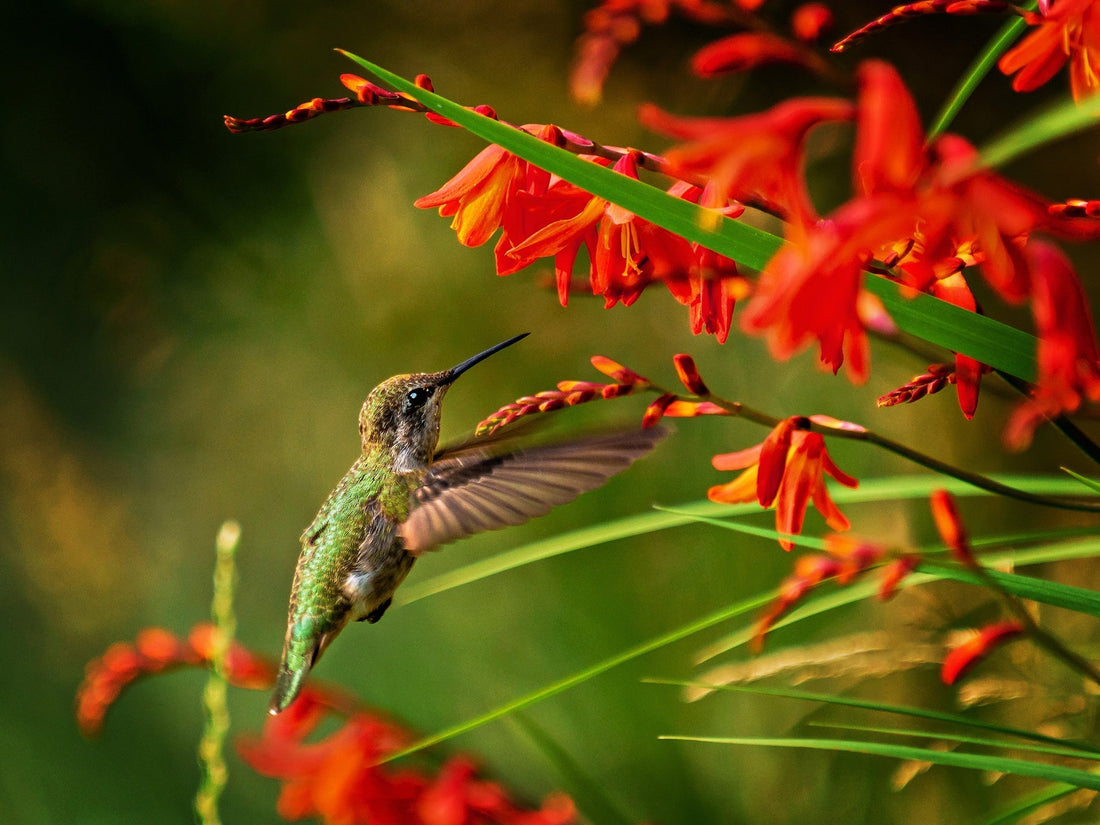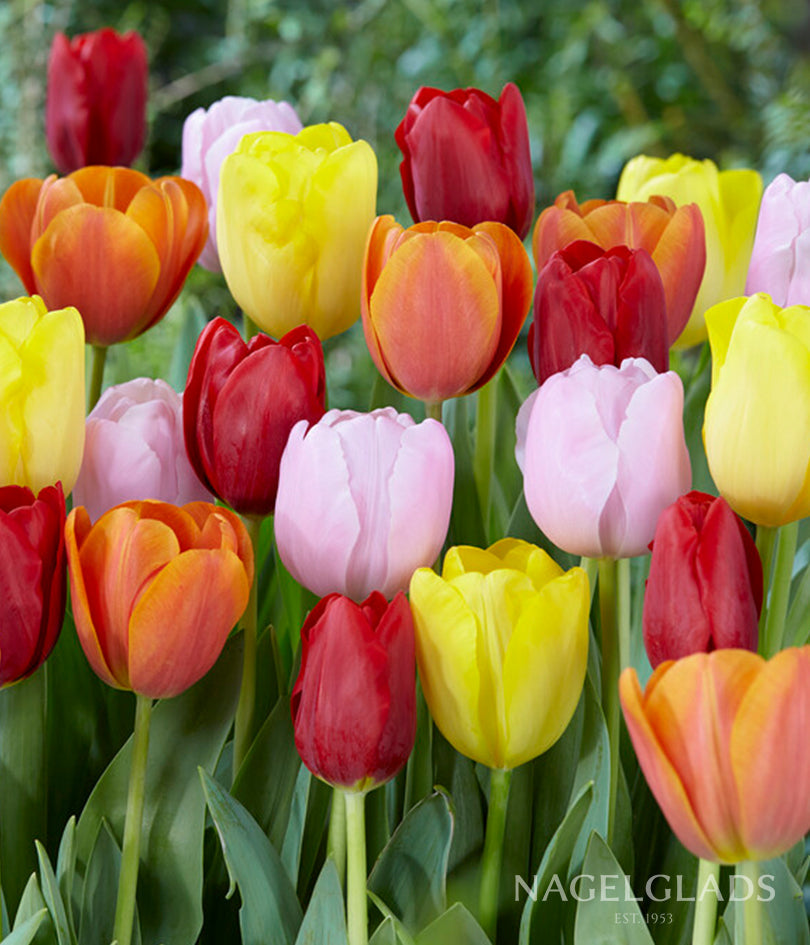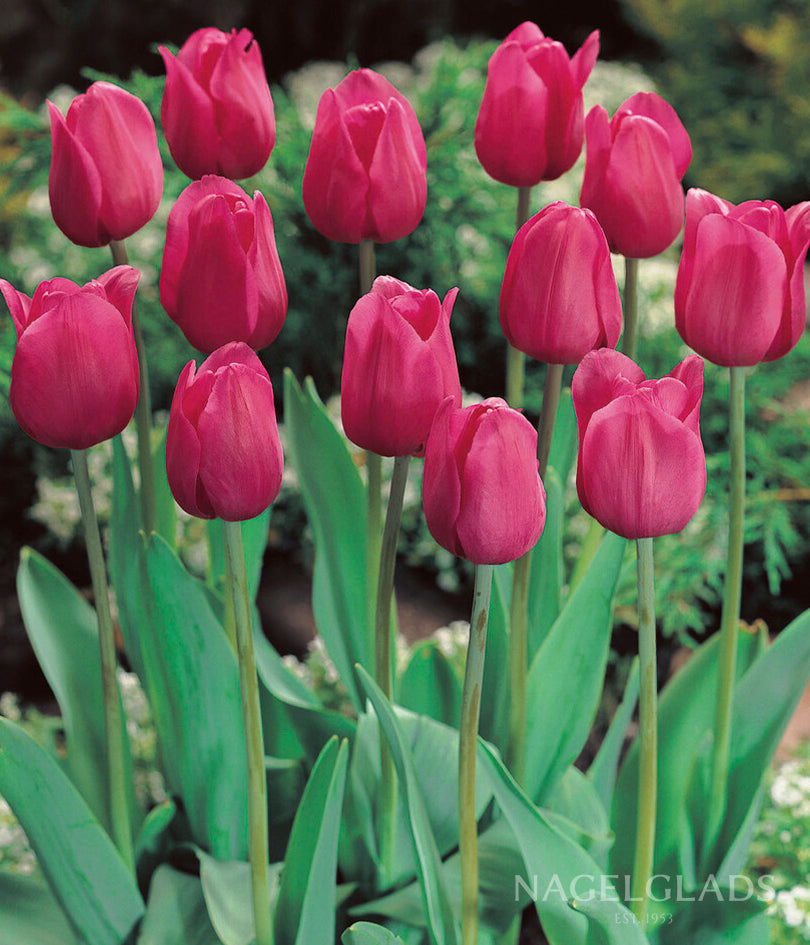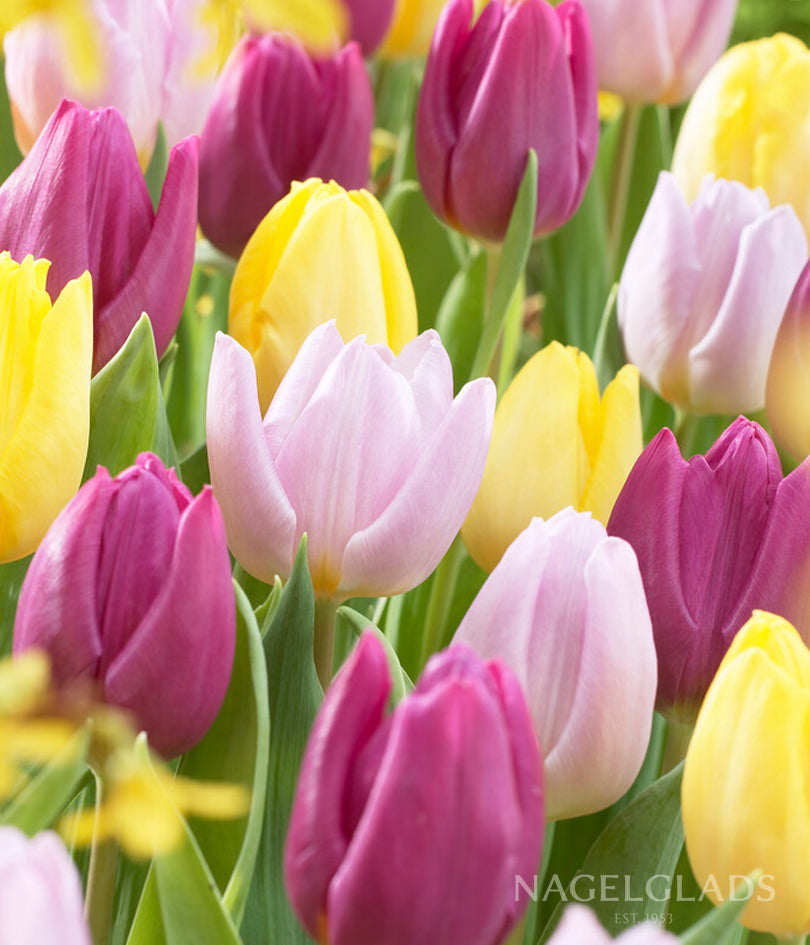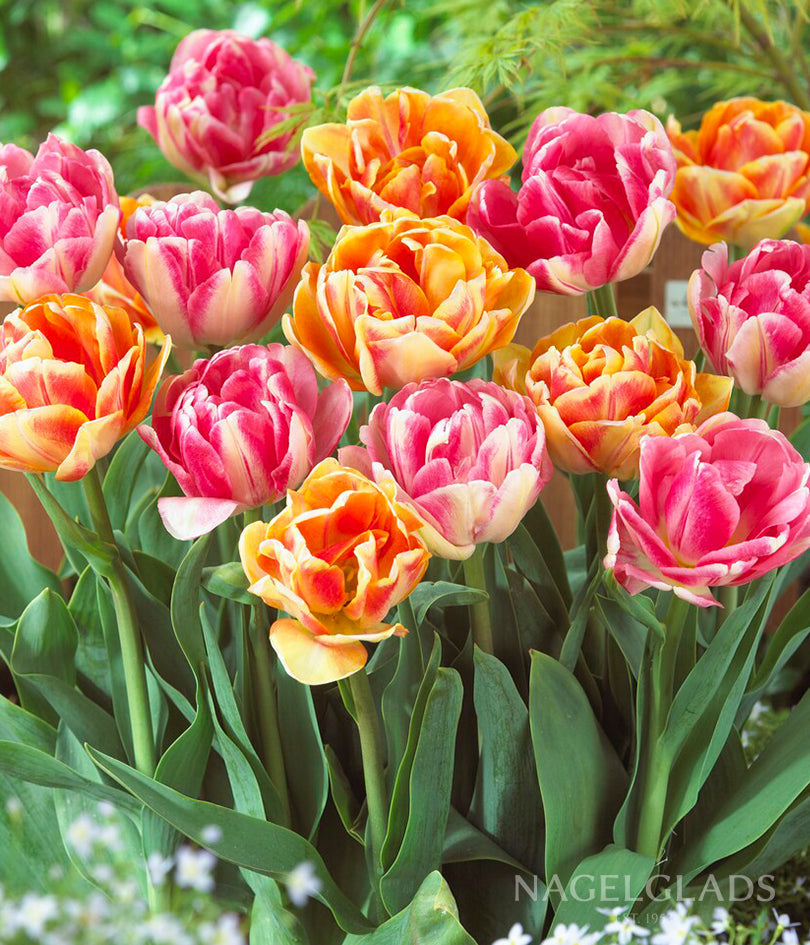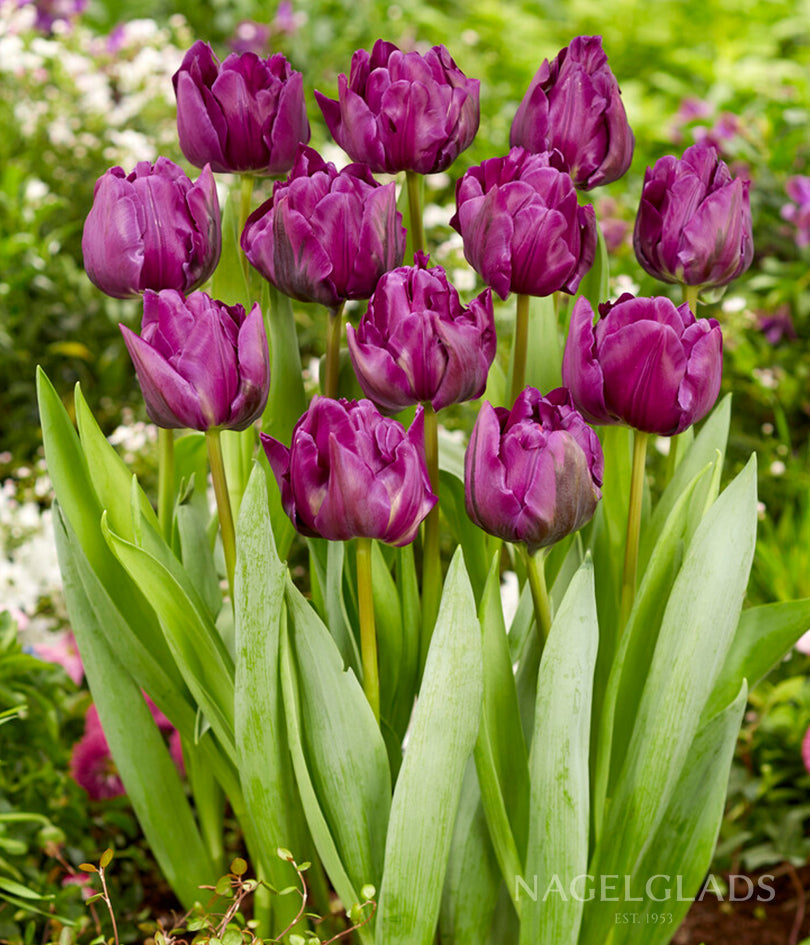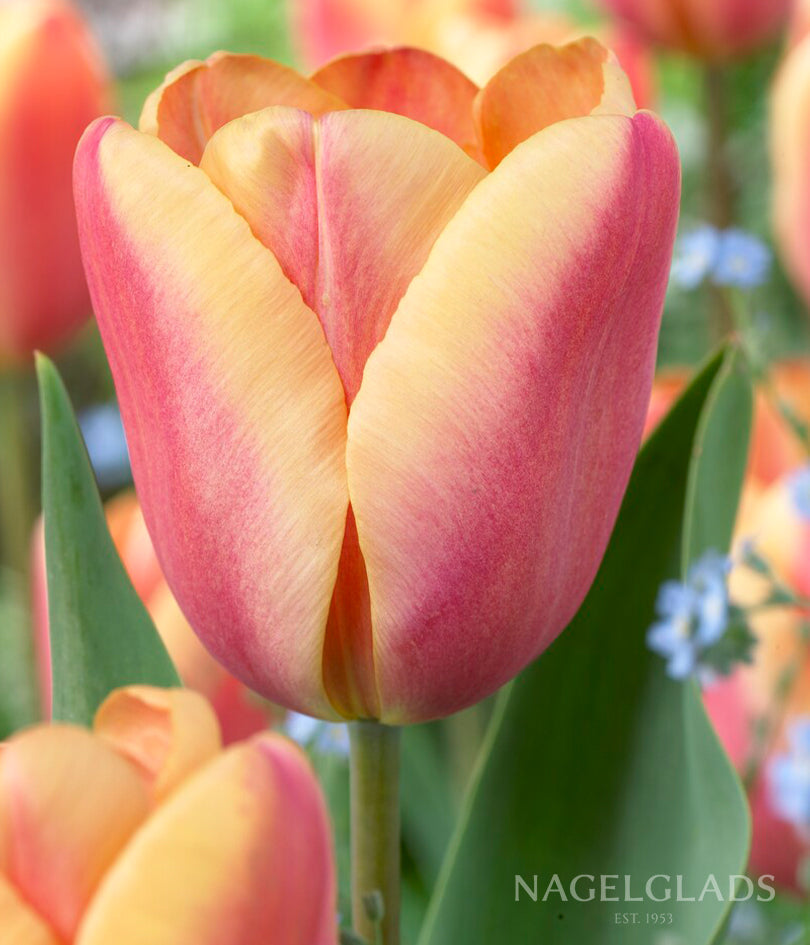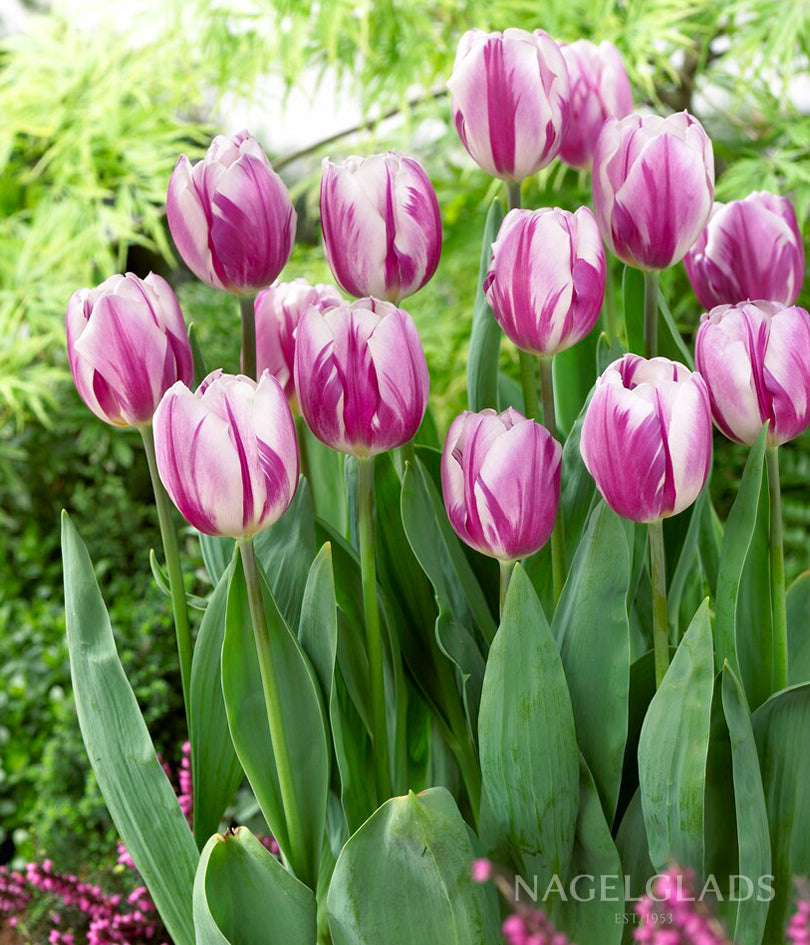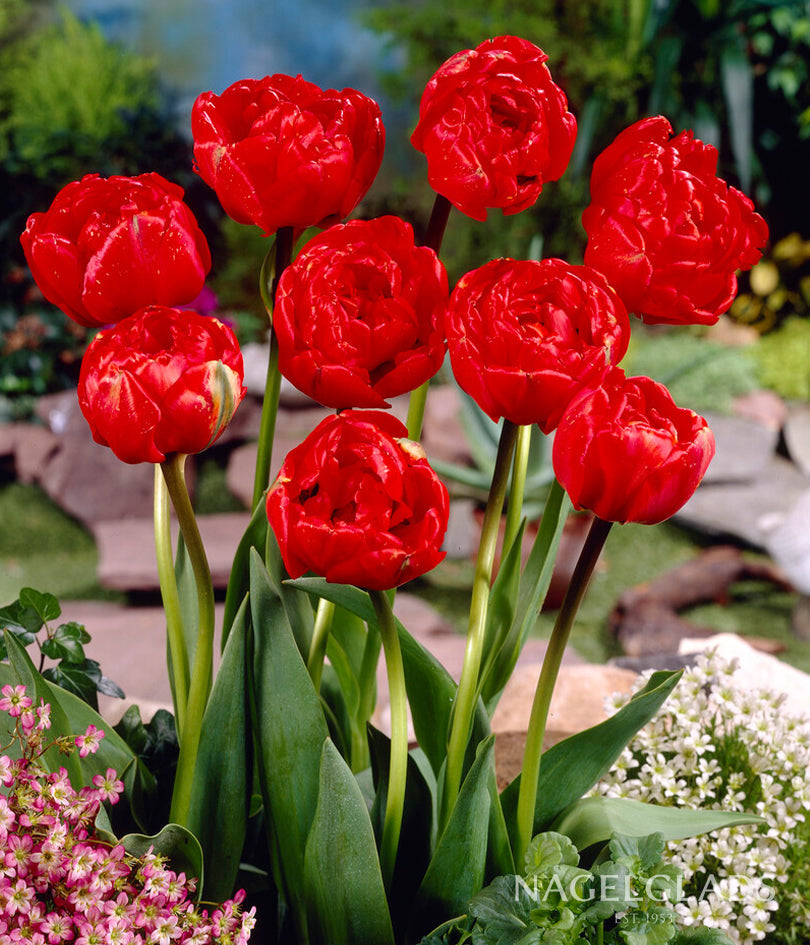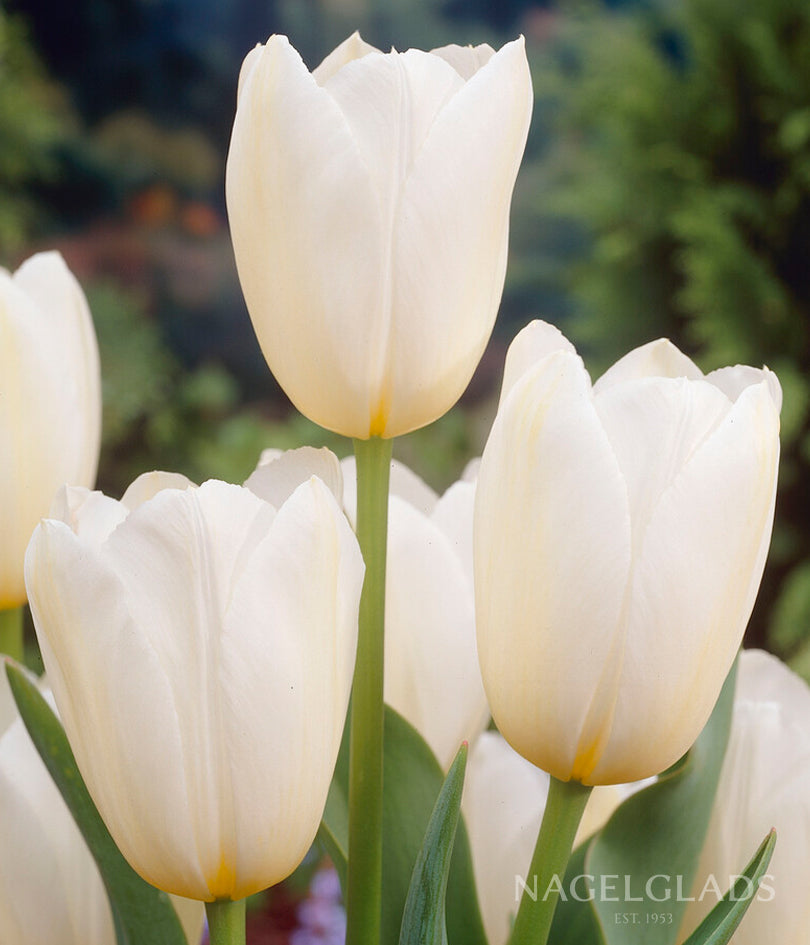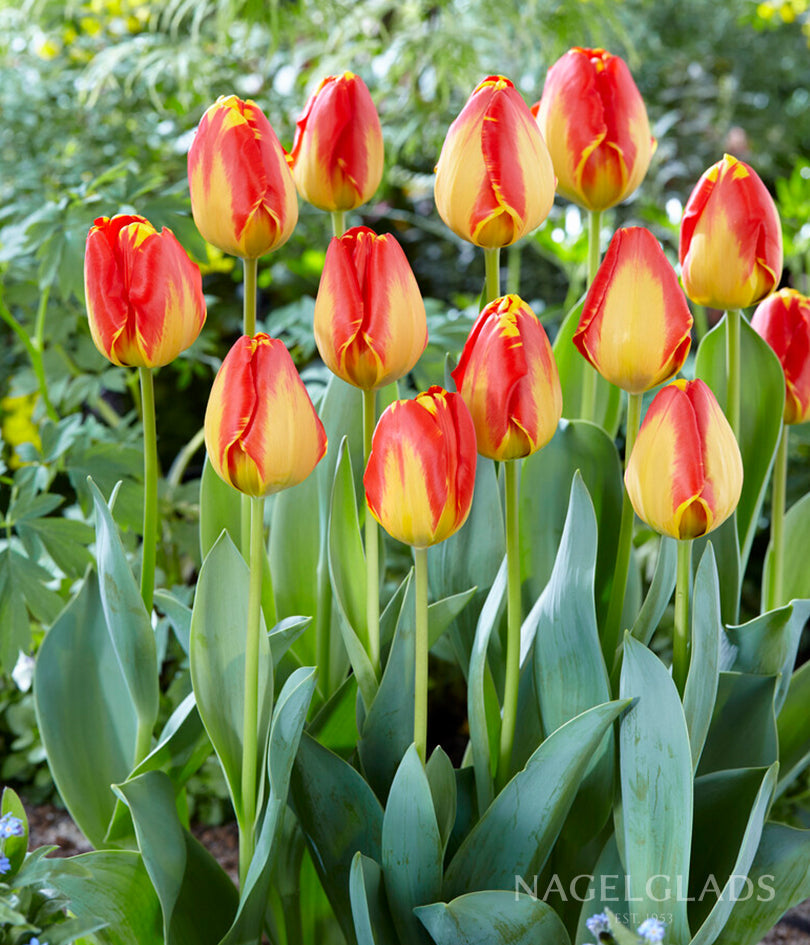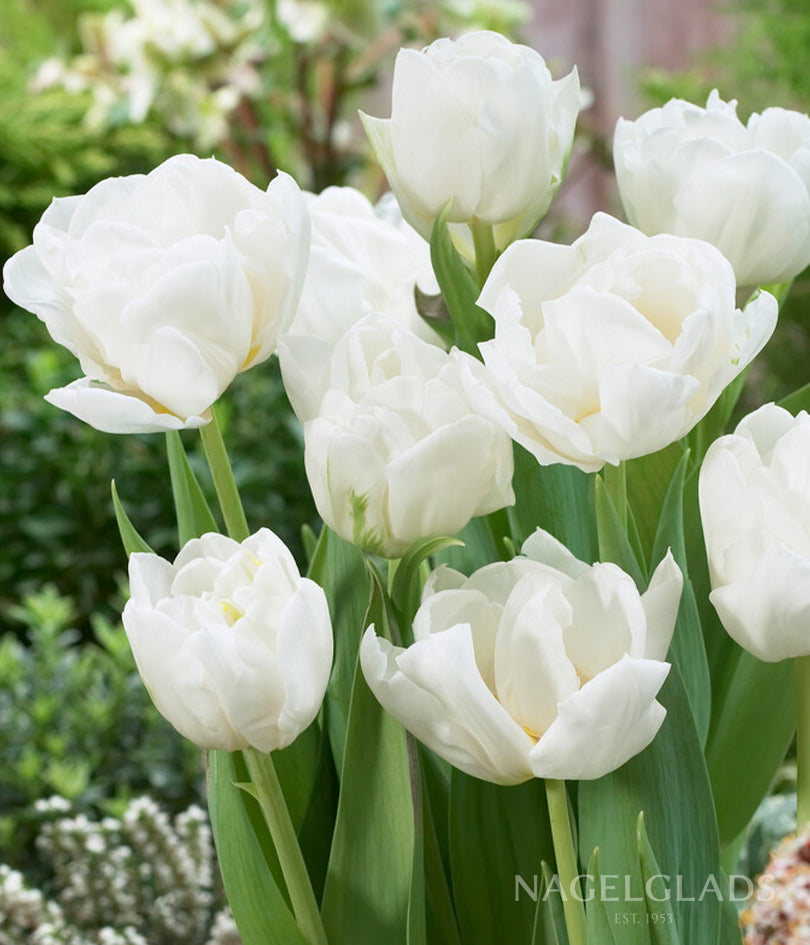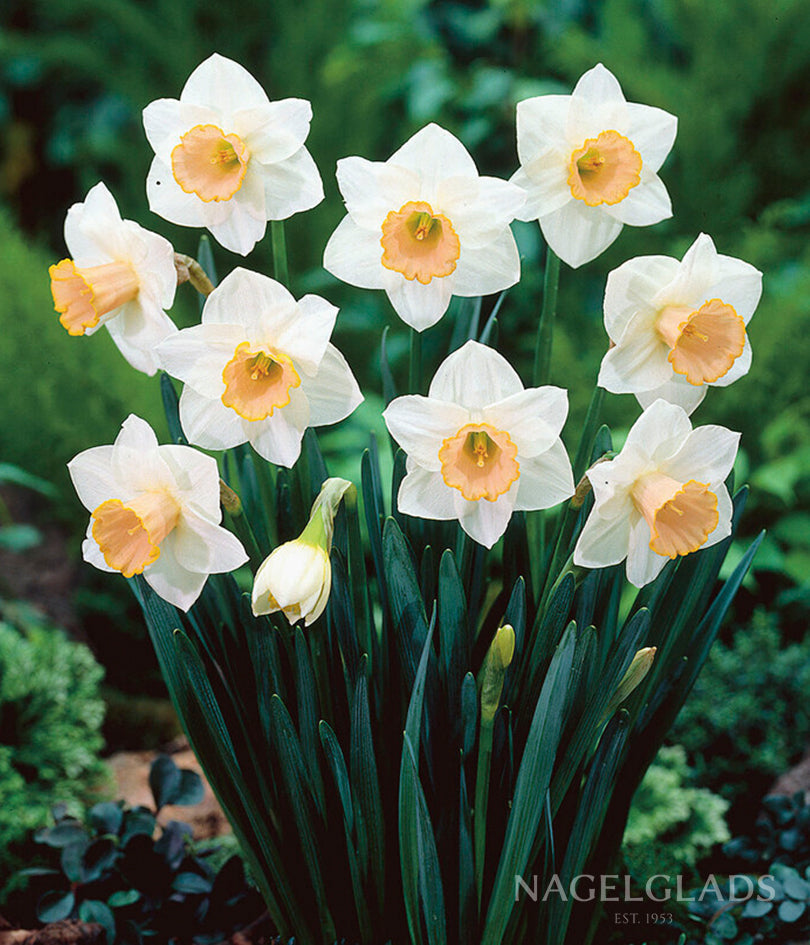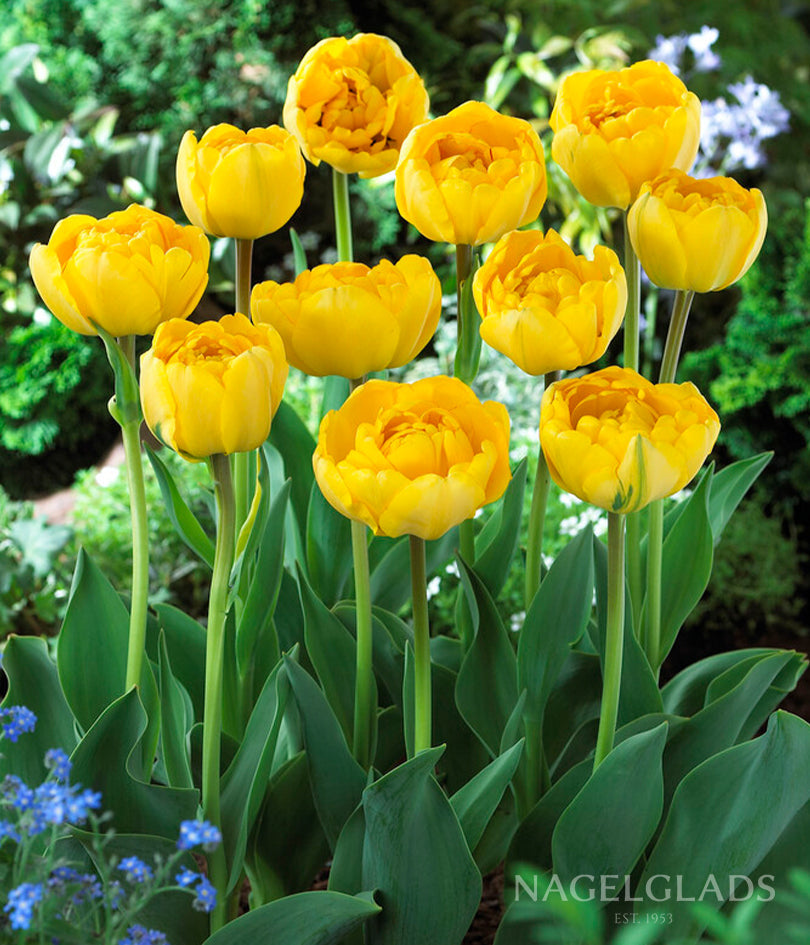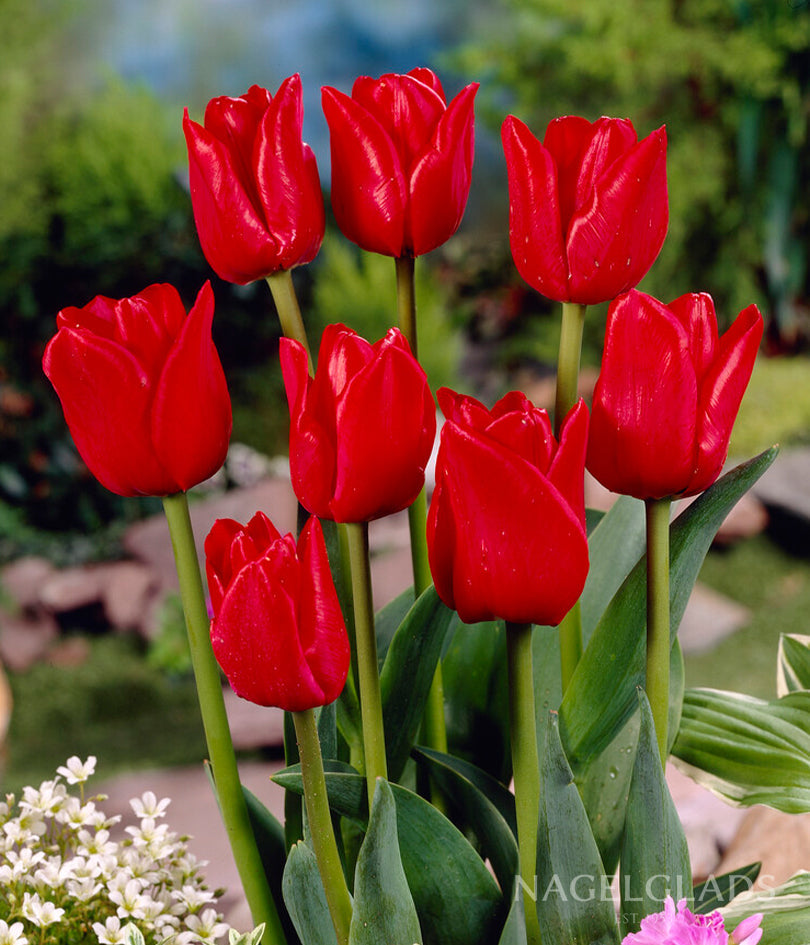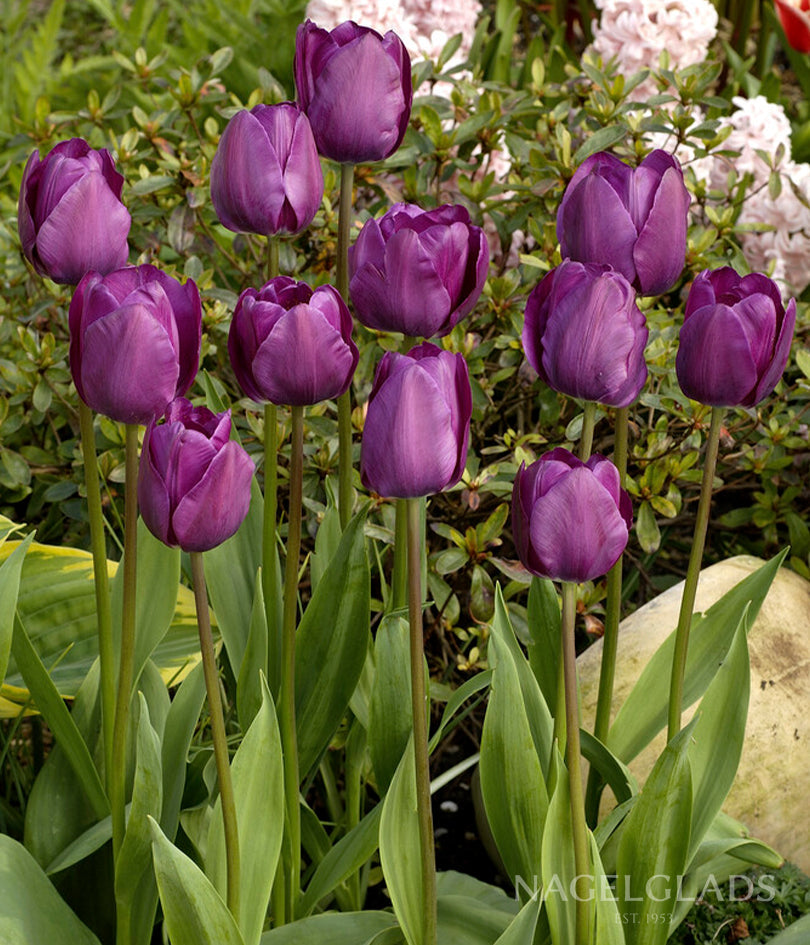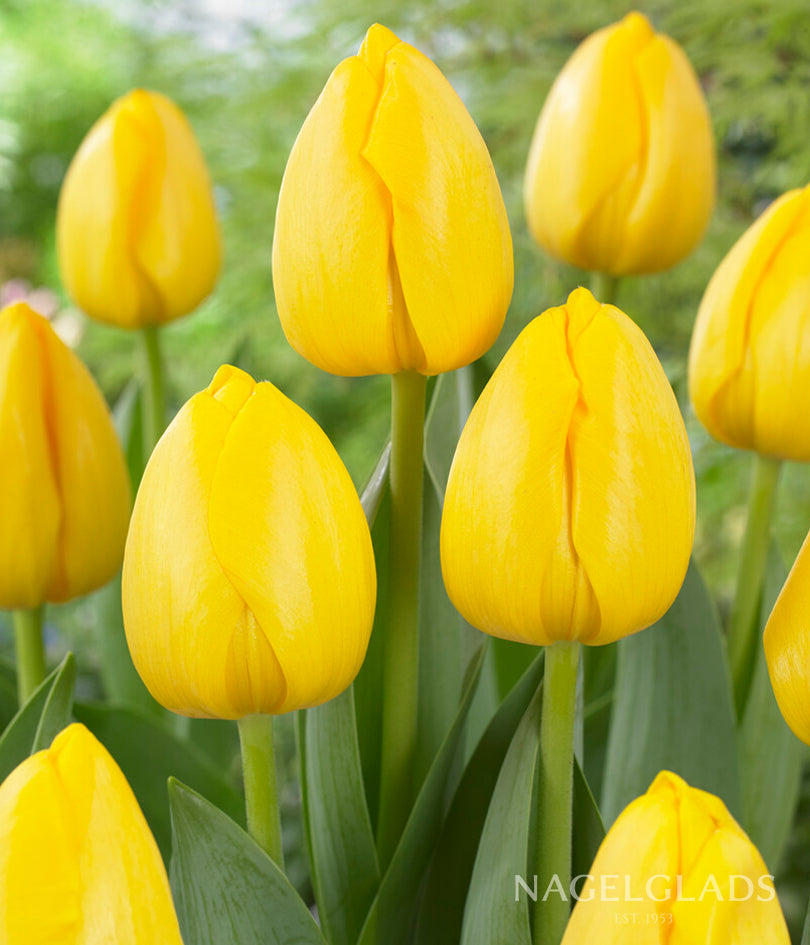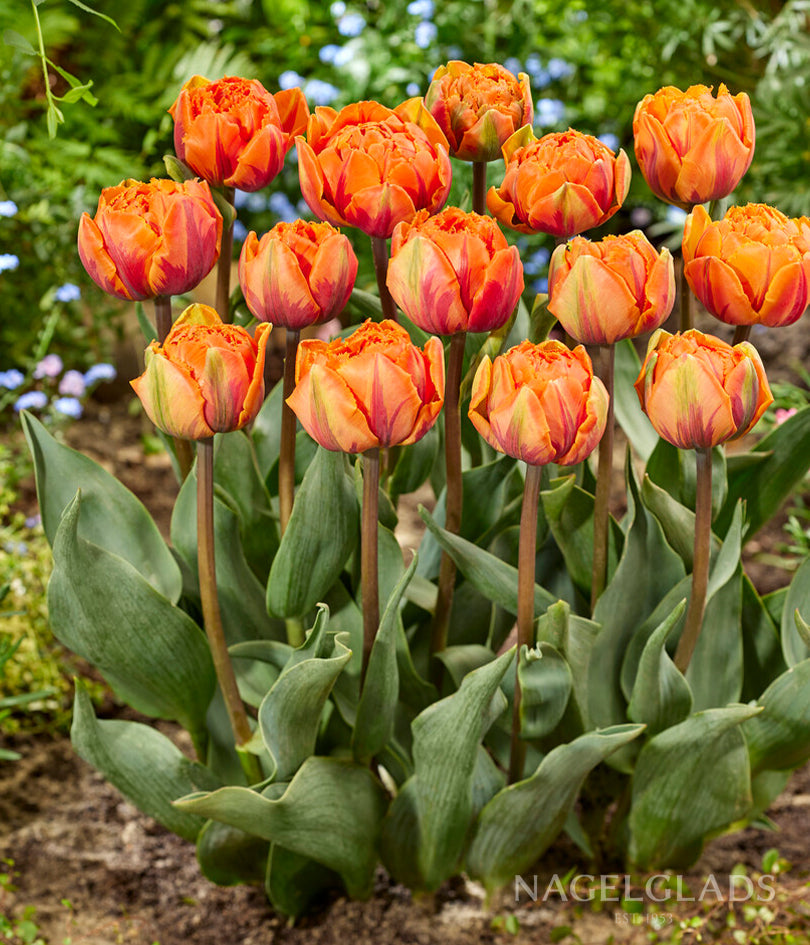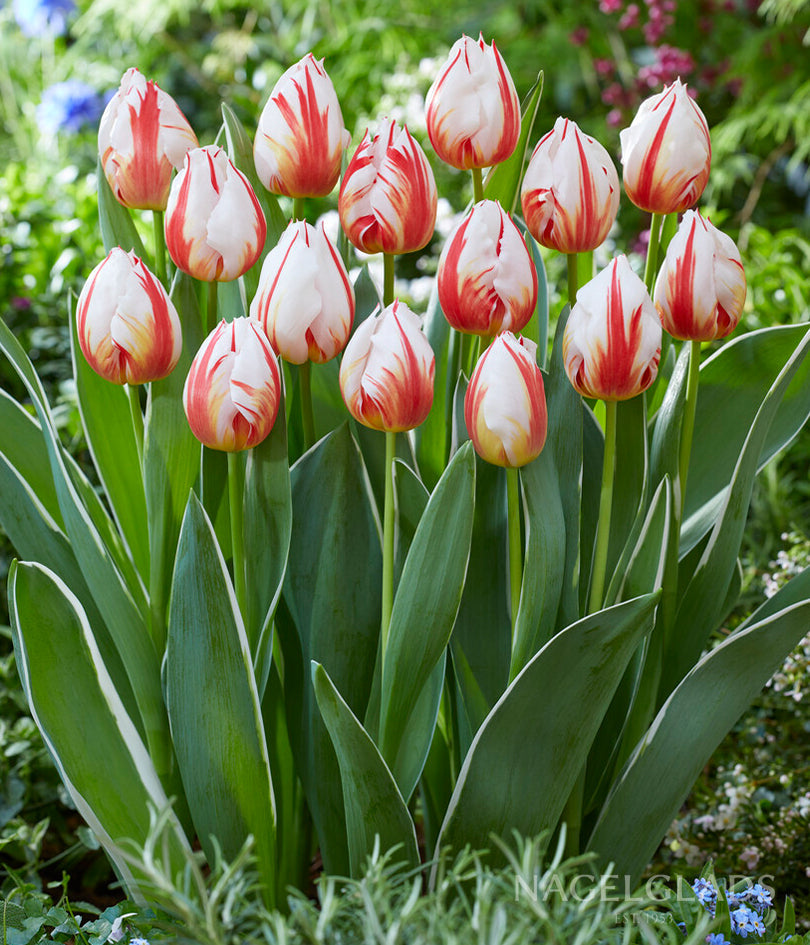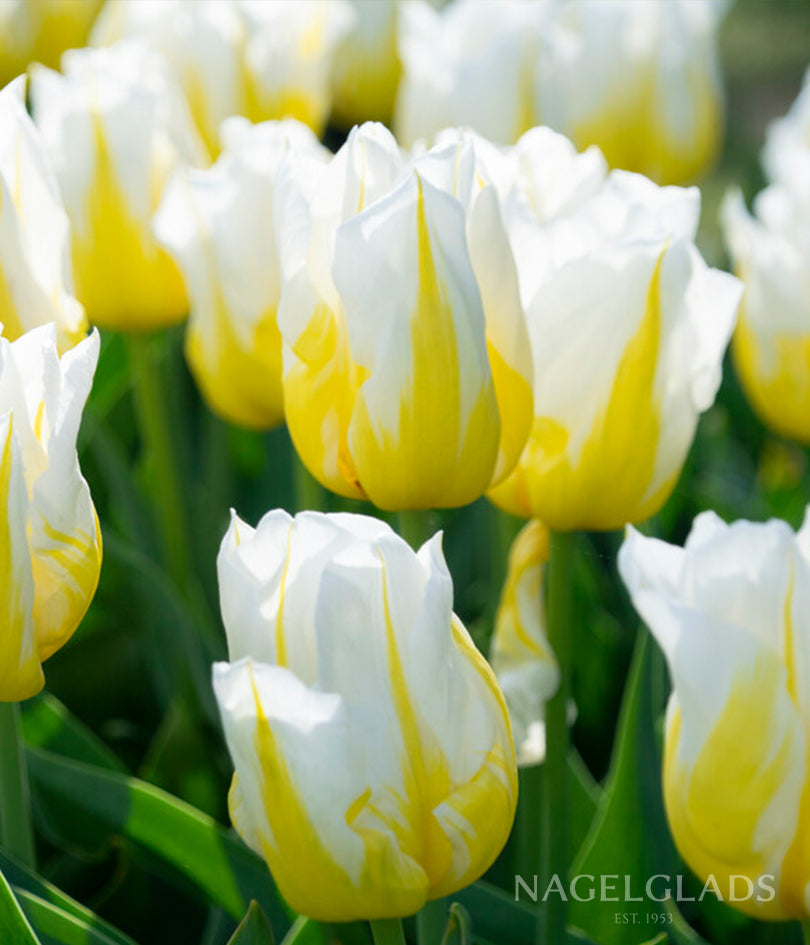Creating a garden that’s both beautiful and beneficial is easier than you think! By choosing flower bulbs that attract bees, butterflies, and other pollinators, you can support local ecosystems and enjoy a vibrant, living landscape all season long!
Tulips may not be the first flower you associate with pollinators, but many varieties—especially those with open, bowl-shaped blooms—offer early nectar sources for bees. Try planting Purple Flag Triumph Tulips, Happy Generation Triumph Tulips, and Flaming Agrass Triumph Tulips to create a colorful welcome mat for spring pollinators!
Daffodils are prized for their cheerful colors and deer resistance, and while they’re not a primary nectar source, their early blooming nature provides important cover and shelter during pollinator emergence. Varieties like Thalia Daffodils, Salome Daffodils, and Ice King Daffodils help mark the start of pollinator season with flair!
Gladiolus bulbs take over in mid- to late-summer, providing bold spikes of color that butterflies and hummingbirds adore. Choose nectar-rich types like Titanic Gladiolus, Nova Zembla Gladiolus, and Mixed Gladiolus to keep your pollinator buffet going strong through August!
Perennials are the glue that holds pollinator-friendly gardens together. Long-blooming, low-maintenance, and rich in nectar, they offer food and habitat throughout the growing season. Liatris, Crocosmia, and Mixed Lilies are excellent choices to layer between bulb waves for continuous support!
Want to design a garden that supports pollinators from early spring to fall? Here’s a breakdown of reliable bulb varieties to anchor your planting:
Top 5 Bulbs for Pollinator-Friendly Gardens:
- Purple Flag Triumph Tulips – Open form makes it easy for bees to land.
- Thalia Daffodils – Fragrant and among the first to bloom.
- Nova Zembla Gladiolus – Eye-catching and butterfly-approved!
- Crocosmia – Nectar-rich and beloved by hummingbirds.
- Liatris – Tall spikes loaded with blooms that bees love.
The key to a successful pollinator garden is planting with overlap in mind. Aim for a mix of early, mid, and late bloomers so there’s always something in flower. Group bulbs in clusters of 5 or more to create larger targets that are easier for pollinators to find!
Consider planting in sunny, sheltered locations with a nearby water source to create an inviting environment. Avoid using pesticides, and let some areas remain a little wild—pollinators love a touch of natural chaos!
Looking to expand your pollinator paradise? Here’s how to create a garden that buzzes with life:
Top 5 Tips for Supporting Pollinators with Bulbs:
- Plant in clumps: Larger flower groupings are more attractive to pollinators.
- Include a variety of bloom times: Early, mid, and late-season flowers keep pollinators fed.
- Choose open-petaled flowers: Easier for bees and butterflies to access.
- Skip the sprays: Avoid pesticides to keep pollinators safe.
- Buy in bulk: More flowers mean more nectar—go big to give back!
With the right bulb selections, your garden can be both a feast for the eyes and a haven for pollinators. Let the buzzing begin!

